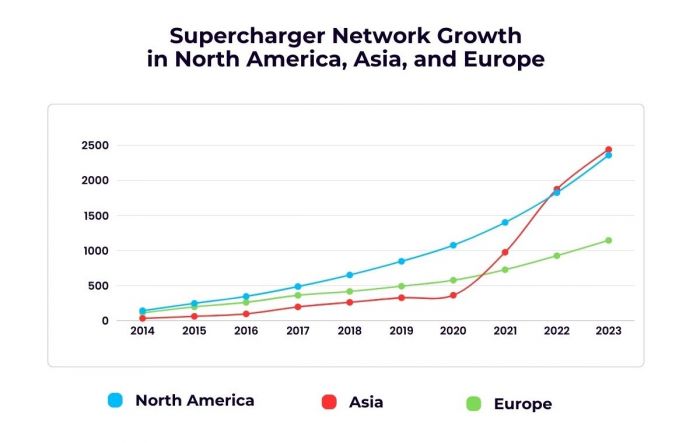Everyone gets nervous when the VTM 4 or Check Engine light on their Honda Pilot comes on. It is alarming to get that sudden flashing light and wonder what is wrong with your car. It may be a simple problem that can be easily remedied, or it could signal an underlying issue in your vehicle.
VTM-4 light highlights
- Common reasons:VTM-4 is active, problems with VTM functions
- How to fix:read the codes, restart the engine
- Possible consequences:no serious consequences
- Priority level:Medium
- Can you drive?Carefully
- DIY repair:Possible
- Repair price range:$0-$200

What does the VTM 4 light mean on a Honda Pilot, and what should you do about it?
The VTM 4 light is a warning indicator that indicates an issue with your vehicle's all-wheel drive system. This system includes sensors, actuators, and other components that allow the Pilot to automatically adjust power to each of its wheels as needed in order to optimize traction and handling.
The VTM-4 system in cars is similar to the TRAFFICASSIST system that Volkswagen has developed for its vehicles. The basis of both systems is a vehicle's traction control and antilock braking system, which are able to detect where the wheels are slipping during acceleration or skidding when braking.
This information can be used to determine the car's current handling status and, in turn, how much torque should be applied to individual wheels to minimize the risk of skidding.
To improve traction further, VTM-4 can also control differentials (the parts of a vehicle that distribute torque from the engine to each wheel) as well as vice versa. This can be especially helpful when driving on snow or icy roads, where a lot of torque is needed to overcome the resistance of the road surface.
By monitoring real-time information about such things as wheel positions and speeds, VTM-4 can make adjustments that keep the car moving smoothly, even in situations where traction would normally be limited.
When should the VTM-4 light come on in a Honda Pilot, and what are some possible causes of this light coming on?
1) The torque management system is on
In most cases, there is nothing wrong when you see this light come on. The VTM-4 system is always active during low traction conditions (such as snow, ice, mud, or sand), and the light will come on to indicate that it is operating.
However, if the VTM-4 light comes on and stays lit, even when you're not driving in low traction conditions, it is a sign that there could be an issue with the system. The most common causes of this are:
2) Low levels of engine oil
The low levels of engine oil can cause the VTM-4 system to react slower than usual, which could trigger the warning light. To fix this, check the oil level and top it up if needed.
3) Bad differential temperature sensor
The differential temp sensor is responsible for monitoring the temperature of each wheel's differential. If this sensor fails, your VTM-4 system will not be able to accurately detect wheel speeds and make the necessary corrections, resulting in a warning light. In this case, you should have the sensor replaced.
4) Worn or damaged tires
If your tires are worn or damaged, they can cause the VTM-4 system to struggle to maintain traction. This can result in the warning light coming on and will require you to replace the tires with new ones.
5) Excessive heat from vehicles that have been driven continuously in the same conditions
If you often drive in the same conditions (such as in heavy traffic or on an incline), your vehicle's components can overheat and cause the VTM-4 system to malfunction. To fix this, take regular breaks during long drives so that your car has a chance to cool down.
So, what about the check engine light in a Honda Pilot?
The check engine light indicates a problem with the vehicle's emissions system. This could be due to a faulty oxygen sensor, catalytic converter, or other components of the emissions system. It is important to have this checked out as soon as possible by a certified mechanic in order to avoid further damage.
Depending on the cause, the repair could involve replacing a defective part or simply resetting the check engine light. Taking your vehicle to an authorized Honda dealer is recommended for reliable diagnosis and repair.
What if both the VTM-4 light and check engine light come on?
If both the VTM-4 light and check engine light come on, it may indicate a variety of problems. Let's take a look at a few potential problems:
- EGR valve issues
The EGR valve is responsible for controlling the recirculation of exhaust gases. If it fails, both lights may be triggered. The repair, in this case, will involve replacing the EGR valve.
Sometimes issues with EGR valve wiring can also trigger both lights. If this is the case, it may be necessary to replace the wiring in order to repair the issue.
- Dirty airflow tube and throttle body
If the air intake system is dirty, it can trigger both lights. In this case, cleaning the airflow tube and throttle body will likely fix the issue.
Additionally, there can be some cracks or other damage to the intake system that can cause both lights to come on. If this is the case, it is best to replace the damaged parts so that the issue can be resolved.
- Dirty or degraded VTM-4 fluid
VTM-4 fluid is responsible for lubricating the differential, providing power to the wheels, and improving traction. If it becomes dirty or degraded, both lights may be triggered. Replacing the VTM-4 fluid is the only way to fix this issue. Make sure to use only certified Honda fluids.
- Loose or damaged gasket
In some cases, a loose or worn gasket can cause both lights to come on. Replacing the gasket is usually the fix for this issue. You may also notice smoke coming from the engine bay if your gasket is damaged.
- Issues with oil pressure sensors
The oil pressure sensors are responsible for monitoring the oil pressure and regulating it to ensure the engine runs smoothly. If these sensors fail, both lights may be triggered. You should have the oil pressure sensors replaced by a certified mechanic.
No matter what the cause of both lights coming on is, it is important to take your vehicle to a certified mechanic for proper diagnosis and repair. If left unresolved, it could lead to more serious and costly repairs in the future.
- Low-quality fuel
Some Honda Pilot owners report that using low-quality fuel can cause the VTM-4 and check engine lights to come on. To avoid this problem, make sure you always use good quality fuel. Eventually, this problem will resolve itself as the low-quality fuel is burned off.
- Cascading fault
Usually, a cascading fault is a reason for multiple lights coming on. This is when a minor issue triggers multiple components to fail, resulting in various warning lights illuminating. In this case, diagnosing the root cause is the best way to fix the problem.
How to identify the exact issue your vehicle has?
When both the check engine light and VTM-4 light come on at the same time, it can be difficult to determine what is causing the problem. To identify the exact issue your vehicle has, you should use an OBD code reader.
This is a device that can be connected to your vehicle's diagnostic port, which allows it to read the codes stored in the car's computer. Once the codes are read, you can use an online database to identify the specific issue with your vehicle and take it from there. You can buy a simple OBD code reader for about $20-$30 or just take your Honda Pilot to a professional who can diagnose and repair the issue.
In general, you shouldn't be too worried about the VTM-4 and check engine lights coming on simultaneously, as most issues causing it are fairly minor in nature. However, it is still important to have it checked out as soon as possible to prevent further damage and expensive repairs down the line.
Bottom Line
The VTM-4 light and the check engine light are indicators of potential problems with your vehicle. If the VTM-4 light comes on and stays lit, it could indicate a variety of problems, such as low engine oil, a faulty differential temperature sensor, or worn or damaged tires.
If the check engine light comes on, it could indicate an issue with the emissions system, such as a faulty oxygen sensor or catalytic converter. If both lights come on, it could indicate EGR valve issues, a dirty airflow tube or throttle body, or a loose gasket. Make sure to take your vehicle to a certified mechanic for proper diagnosis and repair.
Left unresolved, the issues could become more serious and costly in the future. Remember to maintain and regularly service your Honda Pilot for the best performance.
About the authors
The CarAraC research team is composed of seasoned auto mechanics and automotive industry professionals, including individuals with advanced degrees and certifications in their field. Our team members boast prestigious credentials, reflecting their extensive knowledge and skills. These qualifications include: IMI: Institute of the Motor Industry, ASE-Certified Master Automobile Technicians; Coventry University, Graduate of MA in Automotive Journalism; Politecnico di Torino, Italy, MS Automotive Engineering; Ss. Cyril and Methodius University in Skopje, Mechanical University in Skopje; TOC Automotive College; DHA Suffa University, Department of Mechanical Engineering






Add comment